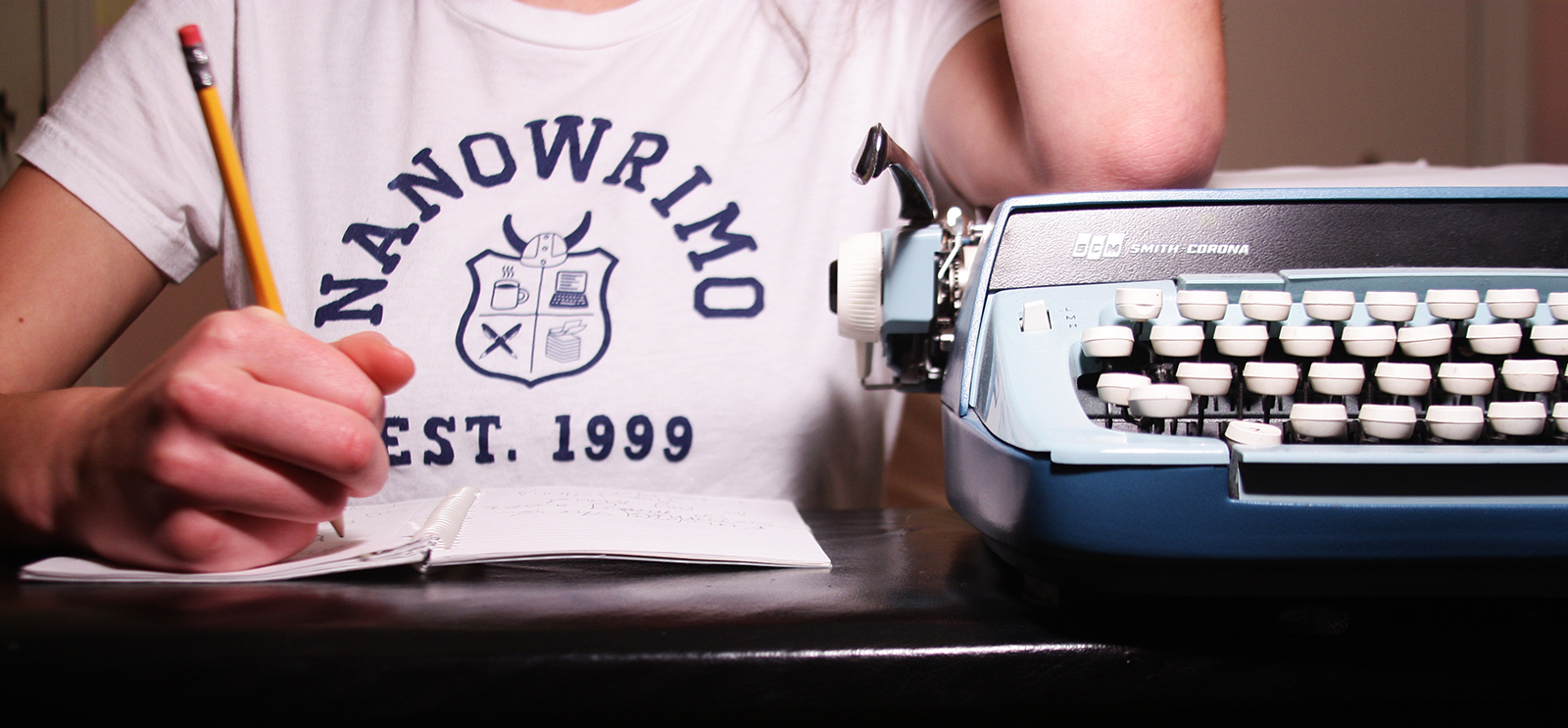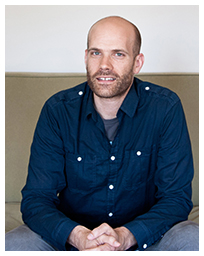
(Photography by Haley LeRand)
National Novel Writing Month founder Chris Baty, AM’97, explains how a “ridiculous challenge” with friends turned into a global writing event—and how to make it to 50,000 words.
In 1999 Chris Baty, AM’97, had an idea for “a cross between a marathon and a literary block party”—he and 20 willing friends would try to each write a novel in 30 days. He called it National Novel Writing Month, a name meant to be “ironically grand-sounding.” But after six of them reached their 50,000-word goal for the month, and Baty felt the exhilaration of having gotten a novel-length story on paper, he started thinking bigger.
 The next year Baty created a website and sent out more invitations, and 140 writers took the challenge in November 2000. The year after, 5,000 participated. By 2006 NaNoWriMo was a nonprofit with office space in Berkeley, California, and thousands more writers. This year, about 400,000 people from more than 30 countries are expected to start writing with NaNoWriMo on November 1.
The next year Baty created a website and sent out more invitations, and 140 writers took the challenge in November 2000. The year after, 5,000 participated. By 2006 NaNoWriMo was a nonprofit with office space in Berkeley, California, and thousands more writers. This year, about 400,000 people from more than 30 countries are expected to start writing with NaNoWriMo on November 1.
Over the years, writers have used the month as a springboard to a publishable book—more than a dozen New York Times best sellers started as NaNoWriMo novels, says Baty. But for many of the 30,000 or so annual winners (as verified by an automated online word counter and rewarded with a printable certificate), it’s about the exhilaration of the process and the sense of accomplishment. “They’re like, all right, I wrote a book in a month, what can’t I do?”
Baty, now a “board member emeritus” at NaNoWriMo and a creative writing instructor at Stanford (he teaches a course called Becoming a High Velocity Writer), offers the following advice for crossing the literary finish line:
- Every writer has novel-worthy ideas, so just write. Remember, “you can edit a bad book into a good book but you can’t edit a blank page into anything but a blank page.”
- Tell people. “It’s really useful to have that sort of looming fear of personal humiliation,” and very hard to quit if family members, friends, baristas all know about your novel writing.
- Do 40–20s: Write for 40 minutes, then take a 20-minute break (Baty often uses his to complain and drink coffee). Then start again.
- Work through the inevitable wall that comes around the second week when big decisions about plot and characters have to be made (NaNoWriMo offers forums and prompts to help). Because week four, “that’s just a really golden time.”
- Seek out other novelists for camaraderie and motivation. NaNoWriMo hosts free “Come Write In” events across the country to give writers a sense of community and support. And, “there’s something about being in a room where everyone’s typing—you just want to type.”
[[{"type":"media","view_mode":"media_original","fid":"2952","attributes":{"alt":"","class":"media-image","height":"440","typeof":"foaf:Image","width":"500"}}]]
